Considering a trailer for your Mercedes-Benz S-Class Cabriolet? While not a standard factory option, towing is technically feasible with aftermarket solutions. This guide explores the nuances, legalities, and practicalities of towing with an S-Class Cabriolet, emphasizing safety and suitability for light loads. Remember, this opulent convertible is designed for pleasure, not heavy hauling.
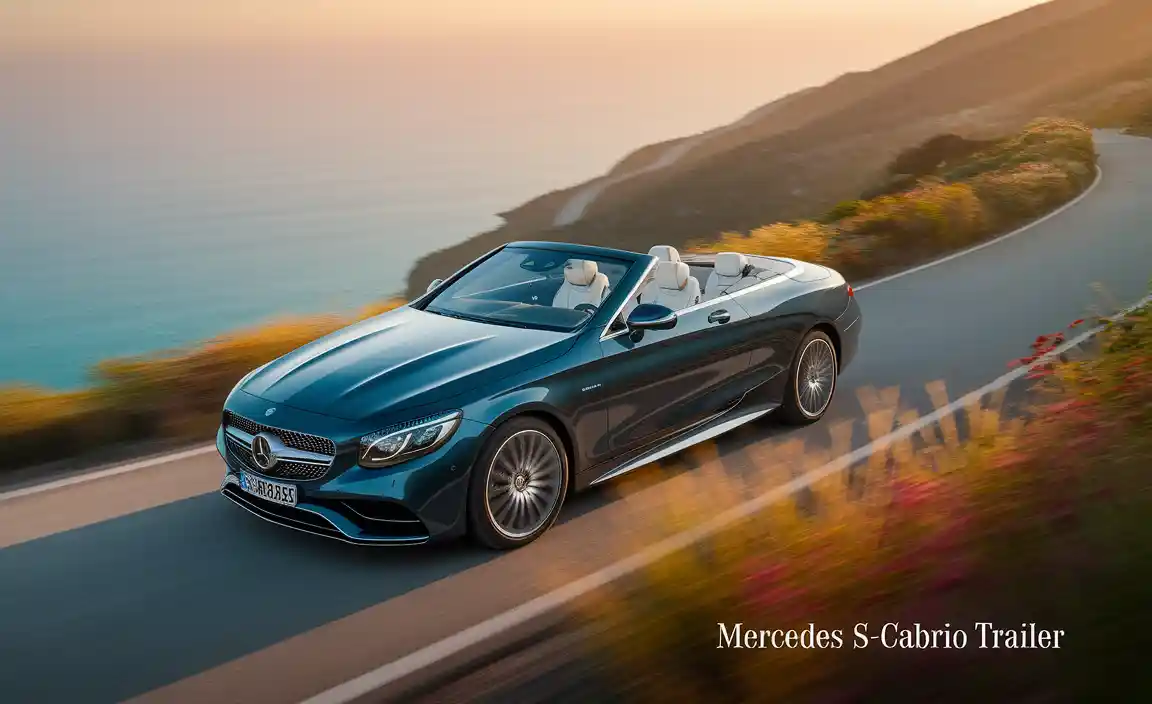
Hey there, fellow Mercedes-Benz enthusiasts! Charlie Joyce here. If you’re dreaming of expanding your S-Class Cabriolet’s capabilities to include a small trailer, you’ve landed in the right spot. While the S-Class Cabriolet is the epitome of luxury and open-top motoring, the thought of taking a small trailer for leisurely getaways might cross your mind. However, it’s not as straightforward as hitching up any old trailer. This guide will break down what you need to know, from the essential considerations to the practical steps, ensuring you approach this with confidence and safety first. Let’s get your questions answered and get you ready for your next adventure!
Understanding the Mercedes-Benz S-Class Cabriolet and Towing
The Mercedes-Benz S-Class Cabriolet is a masterpiece of engineering, designed to offer unparalleled comfort, performance, and open-air driving pleasure. Its primary focus is luxury cruising and sporty dynamic driving, not heavy-duty tasks. This is crucial to understand when we talk about towing. Unlike some of their more utilitarian SUV or even sedan counterparts, S-Class Cabriolets are not typically equipped from the factory with a trailer hitch or the robust towing packages you might find on other vehicles.
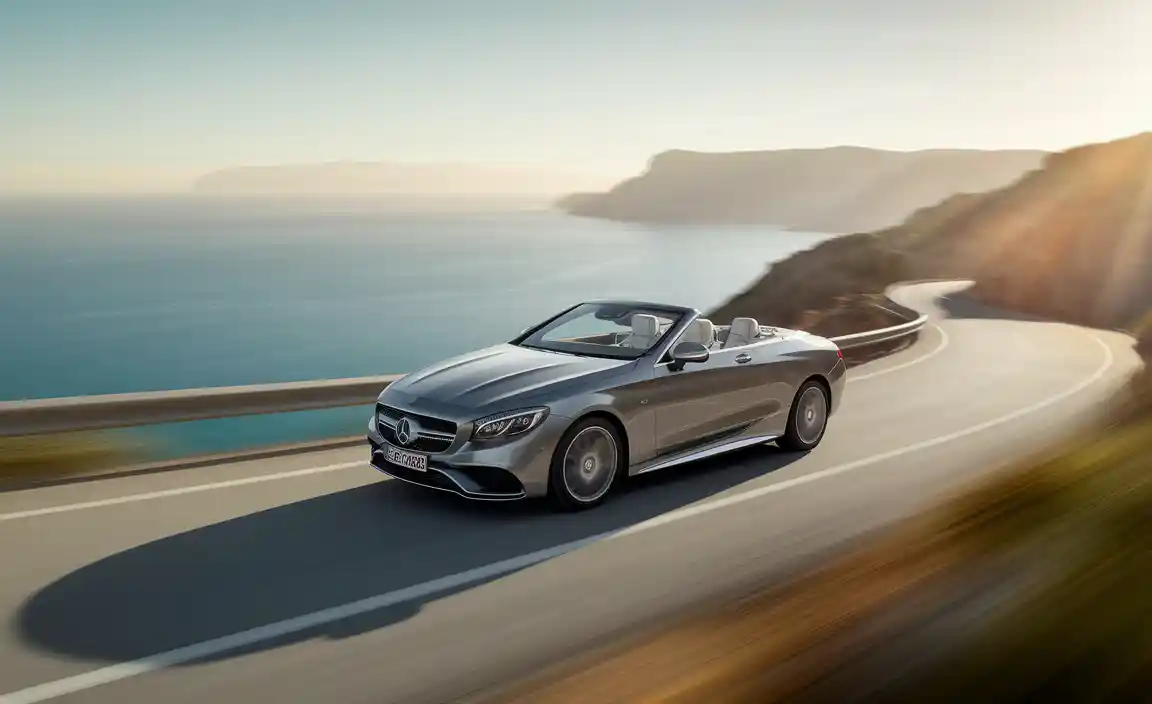
This means that if you’re considering towing anything with your S-Class Cabriolet, you’re likely looking at aftermarket solutions. It’s not a common setup, and for good reason. The vehicle’s design, suspension, and cooling systems are all optimized for its intended purpose, which doesn’t usually include the added stress of towing.
Why Towing Might Not Be a Primary Feature
Several factors contribute to why towing isn’t a prominent feature of the S-Class Cabriolet:
- Vehicle Design: The S-Class Cabriolet is a four-seater convertible with a focus on elegance and aerodynamic lines. Integrating a tow hitch seamlessly without compromising its aesthetics is challenging from a design perspective.
- Performance and Handling: While powerful, the S-Class Cabriolet’s chassis and suspension are tuned for optimal road feel and comfort. Adding the weight and drag of a trailer can significantly alter its handling characteristics, especially at higher speeds or during emergency maneuvers.
- Cooling Systems: The engine and transmission cooling systems are calibrated for the vehicle’s standard operating conditions. Towing, especially in warmer weather or uphill, can put an increased load on these systems, potentially leading to overheating if not adequately managed.
- Target Audience: Owners of S-Class Cabriolets typically prioritize luxury, comfort, and driving dynamics over utility. The need for towing is generally met by different vehicles within the Mercedes-Benz lineup or by a separate utility vehicle.
Can You Actually Tow With an S-Class Cabriolet?
The short answer is: technically, yes, but with significant caveats and considerations. Mercedes-Benz itself does not generally offer factory-integrated trailer hitch solutions for the S-Class Cabriolet. Therefore, any towing setup will involve aftermarket components. This introduces a layer of complexity regarding fitment, legality, and safety that you wouldn’t encounter with a vehicle designed for towing.
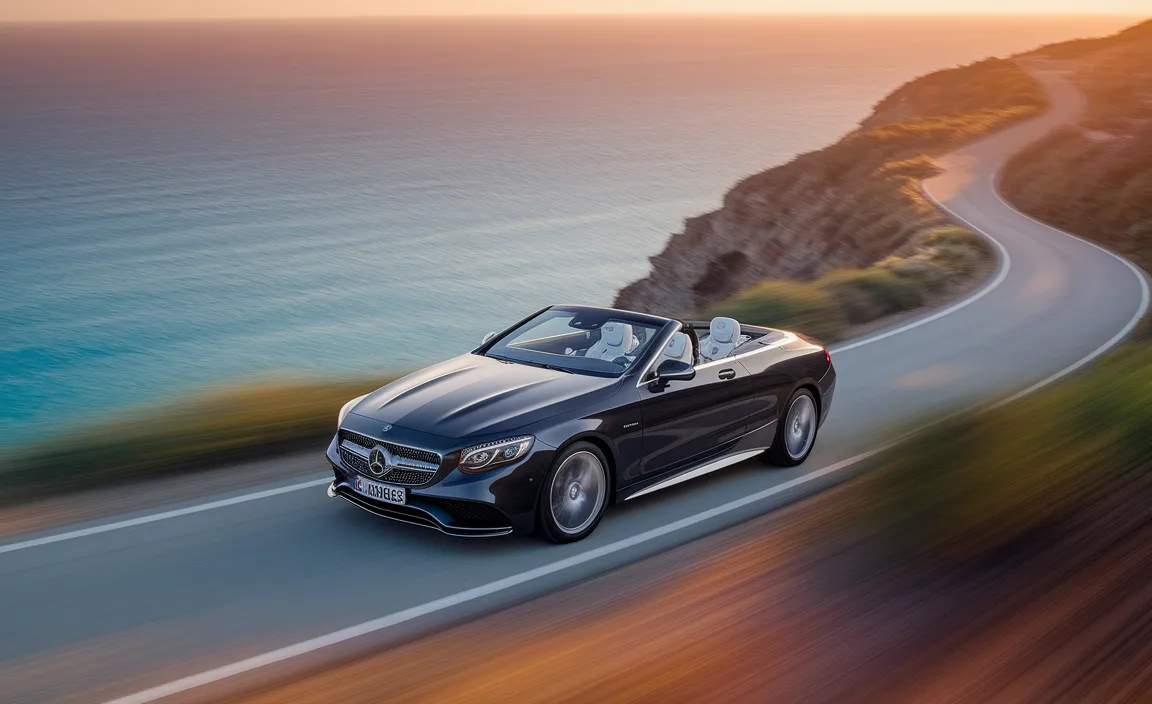
If you’re thinking about towing a small, lightweight trailer – perhaps for a weekend trip with some camping gear or a specialized item – it’s not entirely impossible. However, it requires careful planning and the right equipment. It is absolutely not recommended for towing heavy loads, large campers, or anything that would push the limits of the vehicle’s capabilities.
Key Considerations Before You Even Think About a Hitch
Before proceeding, it’s vital to understand the limitations and risks:
- Weight Limits: The S-Class Cabriolet has a specified gross vehicle weight rating (GVWR) and gross axle weight ratings (GAWR). While not explicitly published for towing, the vehicle’s structure, brakes, and powertrain are not engineered for significant towing loads. You’ll need to be extremely conservative with any trailer weight.
- Braking System: The S-Class Cabriolet likely has a powerful braking system, but it’s designed to stop the car itself. Adding trailer weight increases the stopping distance significantly. Consider trailers with their own braking system (electric or surge brakes) if towing anything beyond the absolute lightest loads.
- Transmission: The transmission, while advanced, might not have specific “tow modes” or the same robust cooling as found in vehicles designed for towing. Extended towing can put undue stress on it.
- Suspension: The air suspension systems on many S-Class models are designed for ride comfort, not load stabilization when towing.
Aftermarket Trailer Hitches for the S-Class Cabriolet
Since Mercedes-Benz doesn’t offer a factory hitch for the S-Class Cabriolet, your options lie with specialized aftermarket manufacturers. These hitches are designed to be vehicle-specific, meaning they are engineered to bolt onto existing points on your S-Class Cabriolet’s chassis.
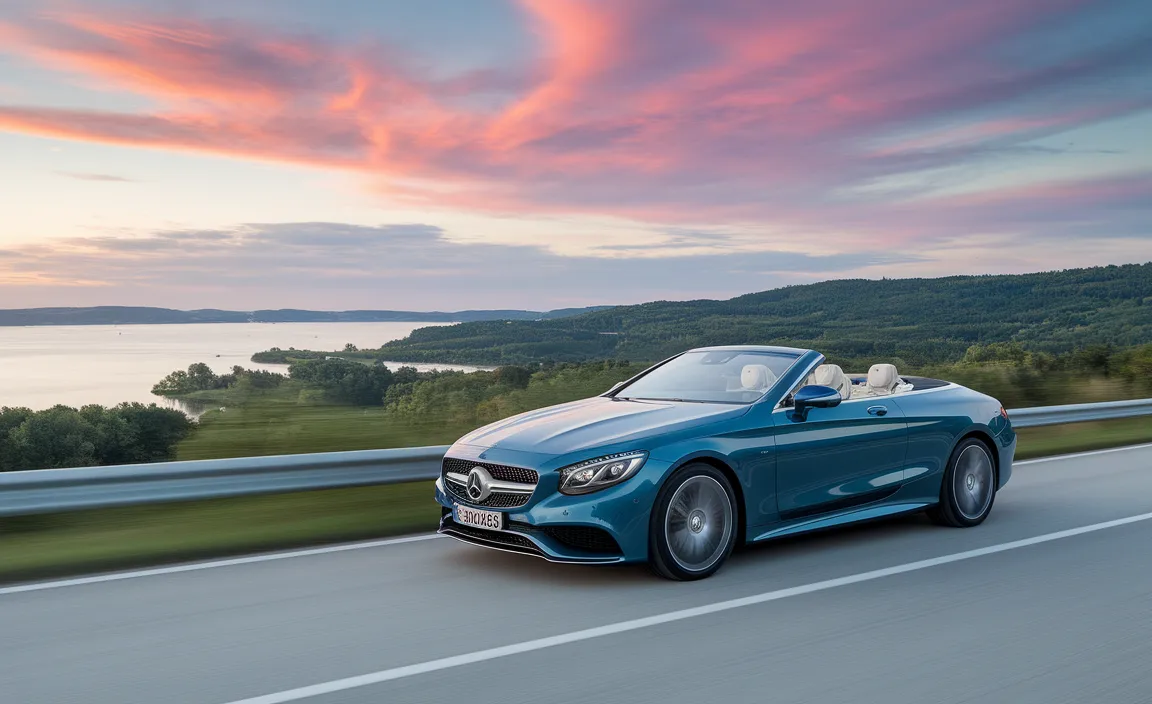
Types of Aftermarket Hitches
You’ll typically find a few types of hitches, though availability for a niche vehicle like the S-Class Cabriolet might be limited:
- Hidden or Concealed Hitches: These are designed to be as unobtrusive as possible, often with the receiver tube tucking away behind the bumper. This is often ideal for a luxury vehicle where aesthetics are paramount.
- Visible Receiver Hitches: These are more common and often easier to install. The receiver tube and mounting brackets are visible underneath or behind the rear bumper.
When looking for an aftermarket hitch, you’ll need to search for manufacturers that specifically list compatibility with your S-Class Cabriolet model year. Brands like CURT, Draw-Tite, or Hidden Hitch are common names in the towing accessory market, but you’ll need to verify their product catalogs for a suitable option.
Finding the Right Hitch: What to Look For
When searching for an aftermarket hitch, prioritize these features:
- Vehicle Specificity: Ensure the hitch is designed exactly for your S-Class Cabriolet model and year.
- Weight Rating: Look for the hitch’s own weight carrying and weight distributing capacities. However, always use the lower of the vehicle manufacturer’s (if stated for towing) or the hitch manufacturer’s ratings. For an S-Class Cabriolet, you’ll be looking at the lowest capacity hitches available – likely for very light loads.
- Ease of Installation: Some hitches are “no-drill,” meaning they utilize existing mounting points on the vehicle’s frame. This is preferable to avoid permanent modifications.
- Aesthetics: Consider how the hitch will look on your beautiful S-Class. Some are much more discreet than others.
You can often find these hitches through online retailers or specialty automotive parts stores. Always read reviews and check manufacturer specifications carefully.
Towing Capacity and Load Limitations
This is arguably the most critical aspect when considering towing with an S-Class Cabriolet. Unlike most vehicles, Mercedes-Benz does not publish a towing capacity for the S-Class Cabriolet. This is a strong indicator that it’s not intended for towing significant loads.
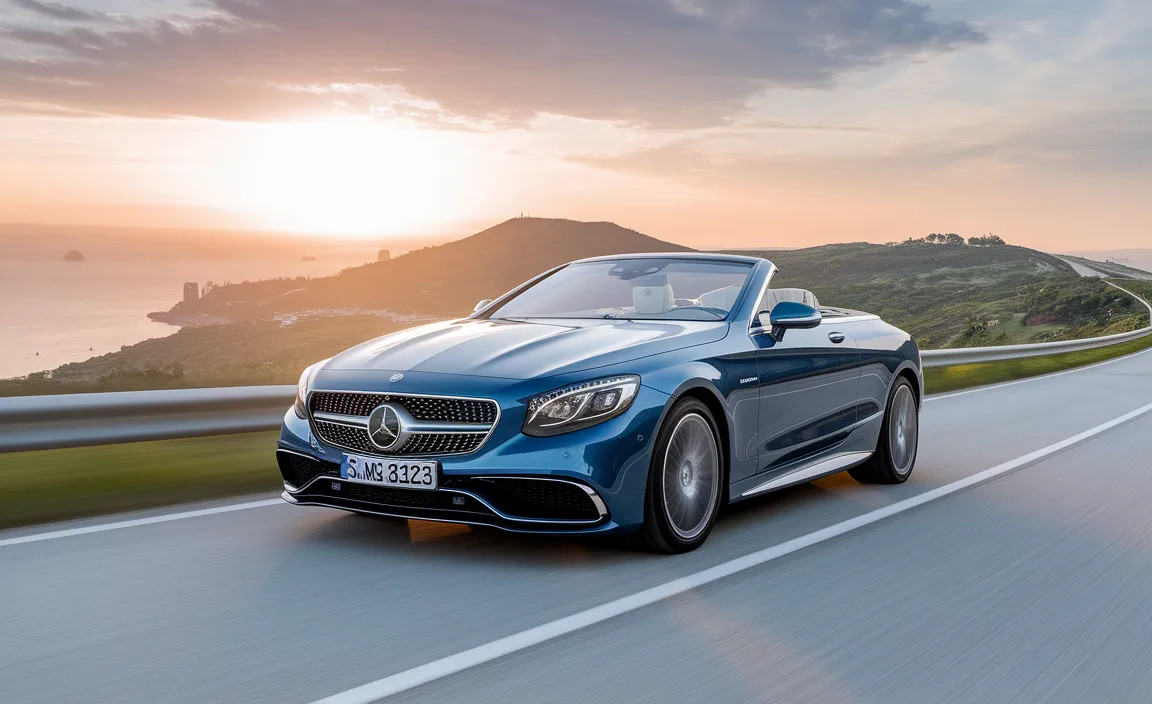
Trailer Weight is Absolutely Key
If you decide to proceed, you must stick to the absolute lowest possible trailer weight. We’re talking about very light trailers – think small utility trailers, motorcycle trailers, or very lightweight teardrop campers. You need to calculate:
- Trailer Tongue Weight: The downward force the trailer tongue exerts on the hitch. Typically 10-15% of the trailer’s total weight. This weight is critical for vehicle stability.
- Trailer Gross Weight: The total weight of the trailer and its cargo.
A good rule of thumb for a vehicle not primarily designed for towing is to keep the trailer’s gross weight well below 1000 lbs (approximately 450 kg), and ideally much less, with a correspondingly low tongue weight.
Why Sticking to Low Weight is Crucial
Exceeding any implied towing limits can lead to serious consequences:
- Compromised Handling: The car may feel unstable, sway, or be difficult to control, especially at highway speeds or in windy conditions.
- Brake Failure: The brakes may not be able to stop the combined weight effectively, leading to dangerous situations.
- Transmission Damage: Overheating or excessive wear on the transmission can lead to costly repairs.
- Suspension Damage: The suspension could be stressed beyond its design parameters.
- Voided Warranty: If your vehicle is still under warranty, towing could potentially void certain components’ coverage, especially if damage can be attributed to towing.
- Insurance Issues: In the event of an accident, your insurance may deny coverage if it’s determined that the vehicle was used outside its intended specifications.
It is always best to consult with a qualified professional or the manufacturer of the aftermarket hitch for their recommended maximum towing and tongue weight ratings for your specific S-Class Cabriolet model, and then to be even more conservative than their recommendations.
Wiring and Electrical Connections
Once you have a hitch installed, you’ll need to connect the trailer’s lights to your S-Class Cabriolet’s electrical system. This involves a wiring harness that converts the car’s signals into the standard trailer light signals (brake lights, turn signals, running lights).
Common Trailer Connector Types
The most common trailer connectors you’ll encounter are:
| Connector Type | Number of Wires | Functionality |
|---|---|---|
| 4-Pin Flat | 4 | Basic lighting: tail lights, brake lights, turn signals (left/right combined). No reverse or battery power. |
| 7-Pin Round (Standard RV Blade) | 7 | Includes all 4-pin functions plus: reverse lights, 12V battery power, auxiliary (e.g., for trailer brakes). |
| 7-Pin RV Blade | 7 | Similar to the round, but with a different pin configuration. Can also support trailer brakes and battery power. |
Installing the Wiring Harness
For a luxury vehicle like the S-Class Cabriolet, it’s highly recommended to use a “trailer wiring harness module” or “converter box.” This module typically taps into the car’s existing tail light wiring without needing to cut and splice into the factory loom. It also helps protect the car’s sensitive electronics from voltage spikes from the trailer.
Here’s a simplified overview of the process (always refer to the specific wiring module’s instructions for your vehicle):
- Locate your vehicle’s tail light wiring: This is usually behind the taillight assemblies in the trunk area.
- Connect the module: The harness will have specific connectors that plug into your S-Class’s tail light harness.
- Connect the 12V power (if applicable): Some modules require a connection to the vehicle’s battery for continuous power.
- Ground the module: The module needs a good ground connection to the vehicle’s chassis.
- Run the trailer connector: Route the trailer connector cable from the module to a convenient location at the rear of the vehicle, typically near the hitch. You may need to drill a small hole or use a grommet.
- Test the lights: Before hooking up a trailer, test all trailer lights using a trailer light tester or by having someone help you.
Given the complexity of modern vehicle electronics and the value of an S-Class Cabriolet, if you’re not comfortable with automotive wiring, it’s wise to have a professional install the trailer wiring. Many reputable auto repair shops and RV dealers offer this service.
Legal and Safety Requirements
Towing is regulated, and your S-Class Cabriolet trailer setup must comply with local laws and safety standards. Even if your car isn’t “rated” for towing, you still have responsibilities.
Key Legal Considerations
- Vehicle Registration: Ensure your trailer is registered and has appropriate license plates if required by your local jurisdiction.
- Brake Requirements: Some regions require trailers over a certain weight to have their own braking system. Research your local laws.
- Trailer Lights: All trailer lights must function correctly and be visible.
- Safety Chains: Always use properly attached safety chains. They provide a backup connection in case the main hitch fails.
- Towing Mirrors: Depending on the trailer size, you may need extended towing mirrors to see adequately behind the trailer.
For detailed information on towing regulations in your area, consult your local Department of Motor Vehicles (DMV) or equivalent transportation authority. For example, the National Highway Traffic Safety Administration (NHTSA) provides a wealth of information on vehicle safety standards, which indirectly influence towing safety.
Essential Safety Practices for Towing
Safety is paramount, especially when towing with a vehicle not designed for it. Here are some best practices:
- Drive Conservatively: Accelerate, brake, and turn gently. Avoid sudden movements.
- Increase Following Distance: You’ll need significantly more space to stop.
- Be Aware of Speed Limits: Many areas have lower speed limits for vehicles towing trailers.
- Check Tire Pressures: Ensure both your car and trailer tires are inflated to the correct pressures for their load.
- Load the Trailer Properly: Distribute weight evenly, with a suitable percentage on the tongue. Ensure cargo is secured.
- Regularly Inspect Equipment: Before and after each trip, check the hitch, safety chains, wiring, and tire condition.
- Know Your Combined Vehicle and Trailer Length: Maneuvering and turning require more space.
- Practice in an Empty Lot: Get a feel for how the combined vehicle handles before heading onto public roads.
Alternatives to Towing
Given the complexities and limitations of towing with an S-Class Cabriolet, it’s worth considering if towing is truly the best option for your needs. Perhaps there are alternatives that better suit the vehicle’s nature and your requirements.
Other Mercedes-Benz Models
If towing is a frequent requirement, a different Mercedes-Benz vehicle might be a more appropriate choice. Models designed with towing in mind include:
- Mercedes-Benz SUVs (e.g., GLE, GLS): These are built with higher towing capacities and often feature dedicated towing packages.
- Mercedes-Benz Wagons (e.g., E-Class All-Terrain): While not as high as SUVs, some have increased utility.
Professional Transport Services
For specialized items or moving goods that you can’t fit in your S-Class, consider professional transport services. This could range from local courier services for smaller items to dedicated vehicle transporters for larger equipment.
Renting a Tow Vehicle
If towing is a rare occurrence, you might find it more cost-effective and less stressful to rent a suitable tow vehicle for the specific task rather than modifying your S-Class Cabriolet.
DIY vs. Professional Installation for Hitch and Wiring
When it comes to installing a trailer hitch and wiring on a luxury vehicle like the S-Class Cabriolet, you have two main routes: DIY or professional installation.
DIY Installation
Pros:
- Potential cost savings on labor.
- Satisfaction of doing it yourself (if you have the skills and tools).
Cons:
- Requires specialized tools and knowledge.
- Risk of damaging the vehicle’s chassis, body, or electrical system if not done correctly.
- Can be time-consuming.
- Ensuring the installation meets safety and legal standards can be challenging.
- Aesthetics might suffer if not done precisely.
Professional Installation
Pros:
- Expertise ensures proper fitment and safety.
- Correct use of specialized tools.
- Proper wiring integration, protecting your car’s electronics.
- Often comes with a warranty on labor and parts.
- Peace of mind knowing it’s done right.
Cons:
- Higher upfront cost due to labor charges.
For an S-Class Cabriolet, especially if you’re new to automotive modifications or towing setups, professional installation is strongly recommended. A reputable trailer hitch installer or a qualified Mercedes-Benz specialist will ensure the job is done safely, correctly, and with the least impact on